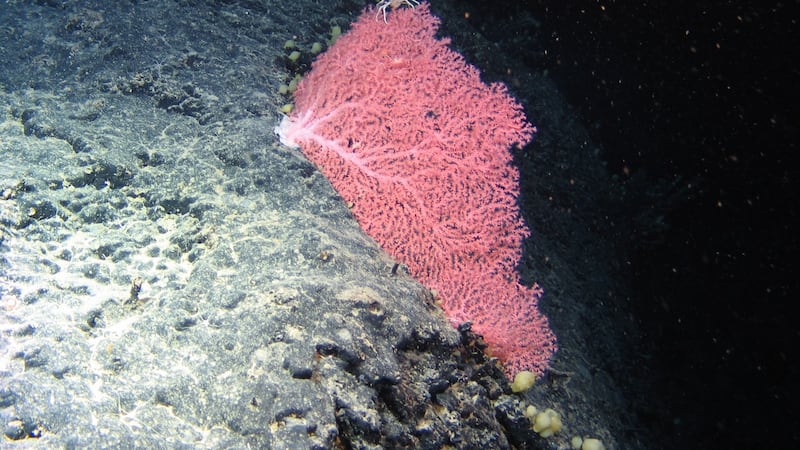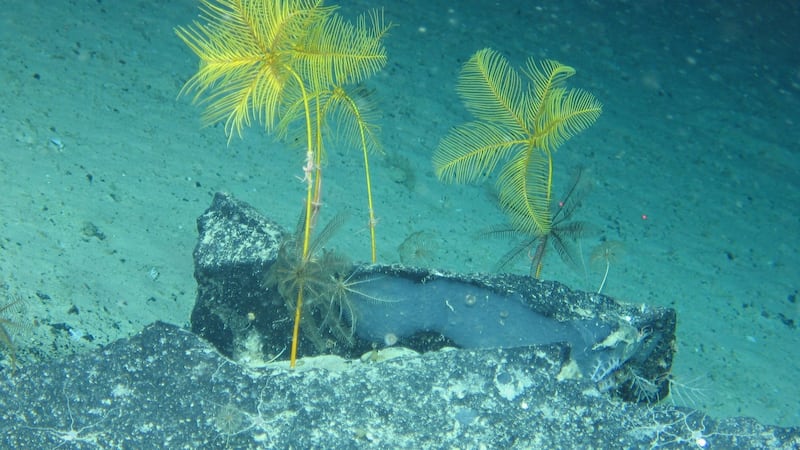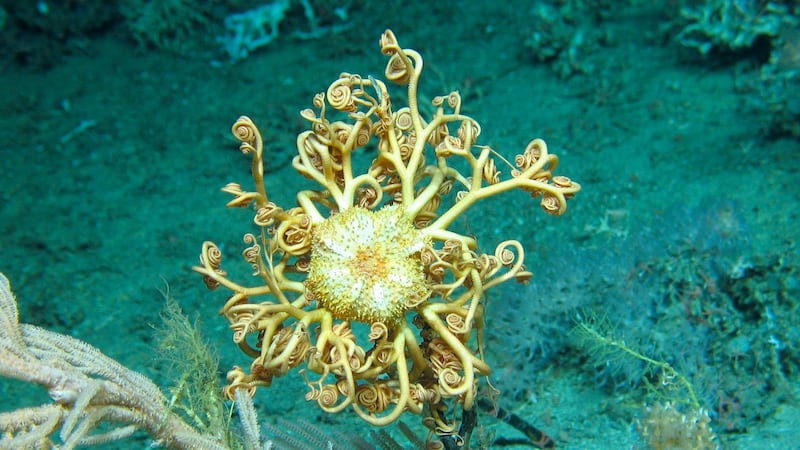Gardens of rare and newly discovered deepwater coral and an entire reef of sponges have been identified off the Irish west coast by a team of Irish and British scientists.
A type of "black coral" identified on the mission may be an entirely new species, according to Marine Institute lead expedition scientist David O'Sullivan and Prof Louise Allcock of NUI Galway.
Mr O’Sullivan notes too that the sponge reef is the first habitat of its type discovered in Irish waters, and matched only by a similar reef in Canadian waters.
Plymouth University scientist Dr Kerry Howell says she hasn’t seen a sponge reef like it in 20 years of studying the deep north-east Atlantic, and says that such features may provide a new source of antibiotics.
A three-week mission on the Irish Lights ship Granuaile undertook an audit of the Irish deep sea environment in areas up to 300 nautical miles from Galway.
Images captured on the Porcupine and Rockall Banks were recorded to a depth of up to 2,991m, using the high definition camera on the Marine Institute's remotely operated vehicle (ROV) Holland 1.
Several "firsts" recorded by the team in Irish waters included a species of octocoral "of the genus Corallium, comprising large fans of coral with a fragile "porcelain-like" skeleton.

“The bamboo coral occurs where the Continental Shelf drops deep into the Atlantic, and may be well over 100 years old,” Prof Allcock explained.
‘Amazed by the diversity’
The black coral - so called because of its black skeleton- takes on a maroon red or cream white hue, depending on the location, she explained.
The black coral is listed as a protected species internationally, as it has been used to make jewellery in the tropics, she said.
“I was aware that we had types of it here, but I am amazed by the diversity,” Prof Allcock added.
The scientists explained that cold water coral reefs are ecosystems hosting a diverse range of marine animals including “sea fans, sponges, worms, starfish, crustaceans and a variety of fish species, making them vitally important habitats for marine biodiversity”.
“These fragile deepwater reefs are commonly associated with topographic features subject to strong bottom currents - for example continental margins, seamounts and mid-ocean ridges,”they said.

As filter feeders, corals depend on suspended food particulate matter – resembling a type of “marine snow” comprising many different materials at great depths.
The team of six scientists worked alongside six technicians “flying” the ROV on shifts. The ROV was deployed along three kilometre sections of seabed during the 1,419 nautical mile voyage.
Up to 20,000 high definition images of 50 sites will be further analysed, while samples were also taken by the ROV.
This latest study of Ireland’s deep sea environment is part of the SeaRover project which began last year, and data will be forwarded in the first instance to the National Parks and Wildlife Service.

This will then inform environmental assessments for any future activity off the coast, be it for oil and gas or fishing activity, the scientists said.
It also provides a “snapshot” of the health of existing marine special areas of conservation off the Irish coast.
Areas of study for the mission were informed by Ireland's national seabed survey, Infomar, which is jointly run by the Geological Survey of Ireland and the Marine Institute.




